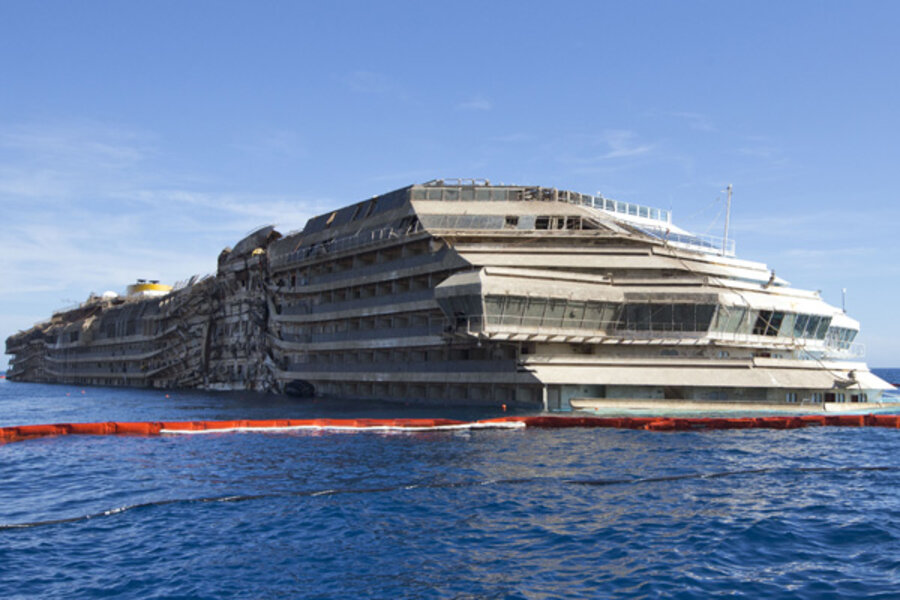Salvaging the Costa Concordia: why an engineer's dream is a daunting task
Loading...
| Rome
It was one of the biggest passenger ships to capsize, and it could require a vessel of equally epic proportions to remove the Costa Concordia from the rocky shores off the coast of Tuscany.
The 950 foot-long cruise liner ran into rocks and toppled over in shallow water off the island of Giglio in January 2012, killing 32 passengers. It was raised from its semi-submerged position last month in an ambitious feat of engineering involving a multinational team of 500 specialists.
Now engineers are looking at how to tow the battered, algae-covered cruise ship, which is twice the weight of the Titanic, away from Giglio, part of an archipelago and marine sanctuary.
One of the likely options is that it will be “piggy-backed” on top of the world's heaviest lifting ship, a giant vessel called the Vanguard. The semi-submersible vessel is owned by a Dutch marine salvage company, Royal Boskalis NV, which announced this month that it had won a $30 million contract for the operation.
The Vanguard, which is normally used for moving oil and gas drilling platforms, can carry up to 120,000 tons. The Concordia weighs 114,500 tons, although that has now increased after huge steel boxes were welded to its hull to help pull it into an upright position.
The idea is that the Vanguard would come alongside the Concordia, flood its ballast tanks with water and sink its deck beneath the water line. The Concordia would then be maneuvered to float above the Vanguard, which would be refloated with the cruise ship on its deck.
Having one of the world’s biggest cruise ships on top of the largest lifting vessel in existence would make for a eye-catching spectacle, and an engineer’s fantasy.
Costa Cruises, the Italian company which owns the Concordia, said that using the Vanguard was one of two options being studied.
The other, more traditional method would be to refloat the cruise ship with the aid of the steel compartments welded to its flanks and then tow it away with tugboats.
“The final decision will be taken after we have finished evaluating the damage done to the cruise ship. But at least we know the Vanguard is booked and available should we decide that is the way to go,” said Rosella Carrara, a Costa Cruises spokeswoman.
The successful raising of the Concordia was hailed as a much-needed boost to Italian national pride – despite the fact that the salvage teams came from nearly 20 nations. But the deliberations over where the Concordia will be taken to be cut up for scrap is becoming mired in a familiar mix of political meddling, bureaucratic ineptitude, and squabbling between different parts of Italy.
The nearest port is Piombino but its harbor isn’t deep enough to accommodate the ship and would need to undergo significant dredging and expansion. That work has not even started – even though the Concordia is expected to be removed from Giglio in the spring of 2014.
“They’ll never be able to do it in time,” says one British maritime engineer who was not authorized to talk to the media but who worked for months on the raising of the liner.
Another candidate is Palermo in Sicily, which has a bigger port but is much further away from Giglio.
With time ticking away and no decision yet made, Italy runs the risk of losing out on the contract altogether – the latest suggestion is that the Concordia could be taken all the way to Smyrna in Turkey or even to India to be dismantled.
The ship’s captain is currently on trial for manslaughter and other charges.








